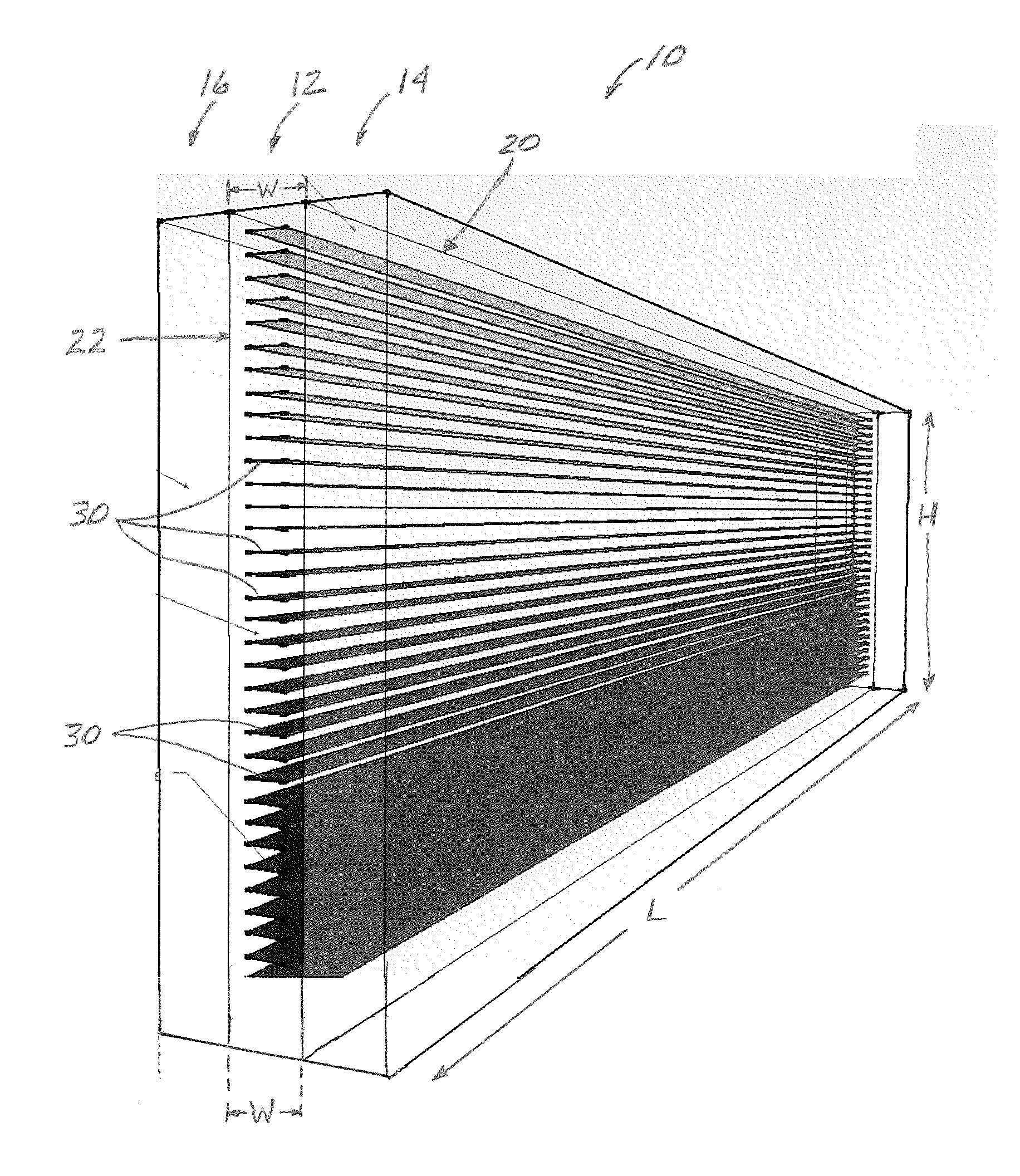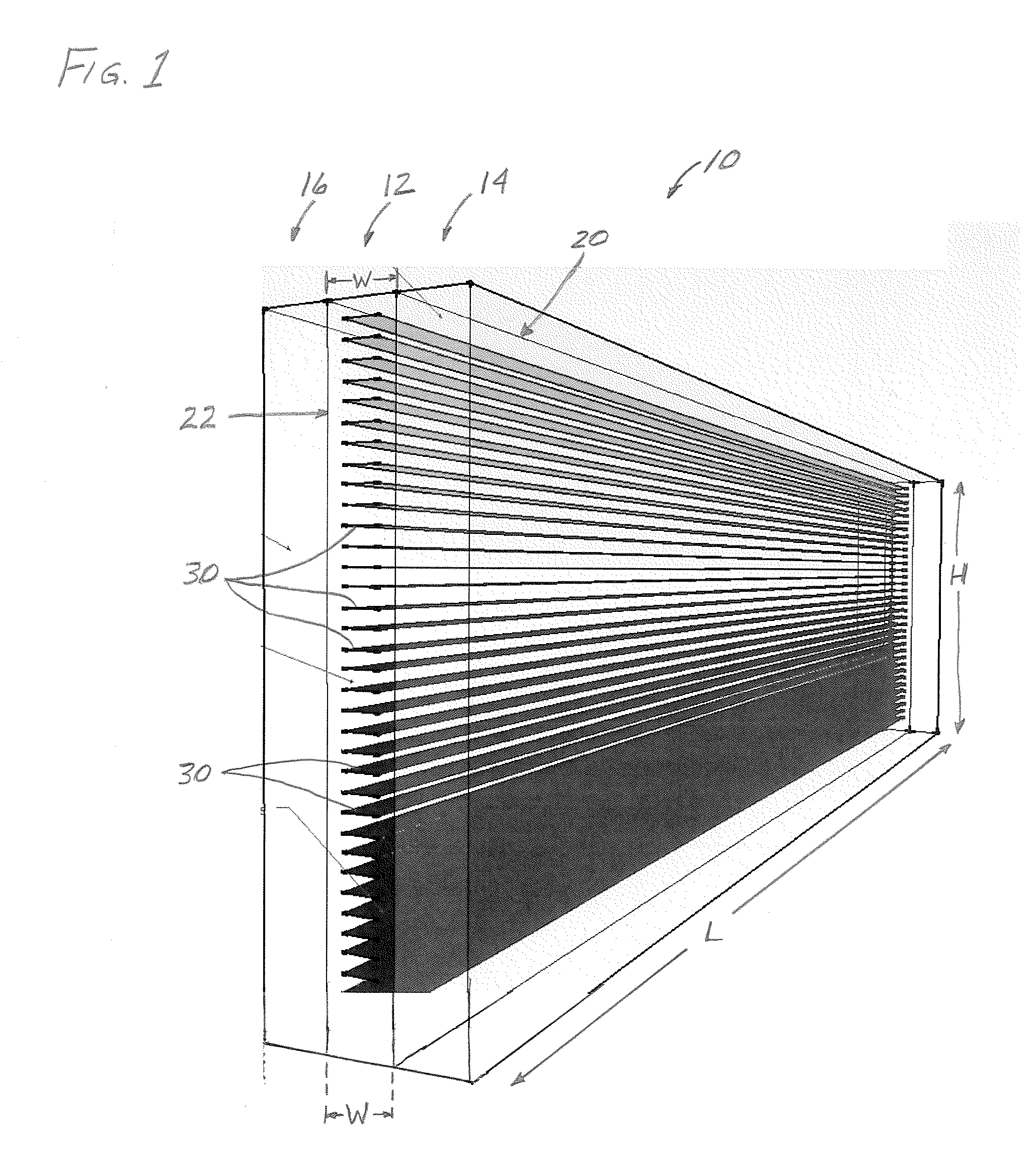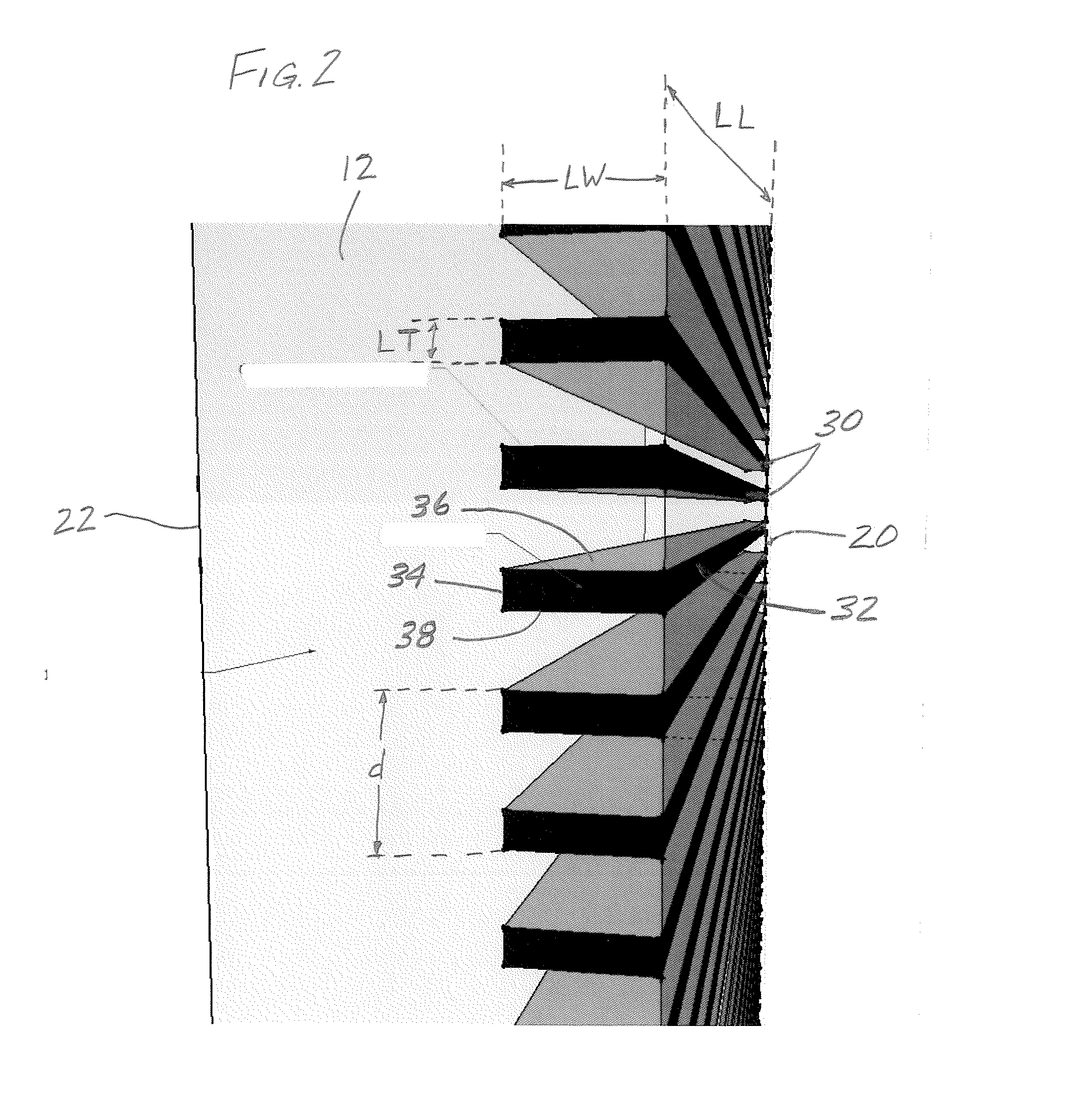Apparatus and method for solar heat gain reduction in a window assembly
a technology of solar energy and window assemblies, applied in door/window protective devices, building components, constructions, etc., can solve the problems of reducing shg, limiting or blocking sight lines and views, and radiant heat within the space, and achieve the effect of selecting the level of opacity
- Summary
- Abstract
- Description
- Claims
- Application Information
AI Technical Summary
Benefits of technology
Problems solved by technology
Method used
Image
Examples
Embodiment Construction
[0014]While the making and using of various embodiments of the present invention are discussed in detail below, a practitioner of the art will appreciate that the present invention provides applicable inventive concepts which can be embodied in a variety of specific contexts. The specific embodiments discussed herein are illustrative of specific ways to make and use the invention and do not delimit the scope of the present invention.
[0015]As used herein, the terms “direct light” or “direct sunlight” refer to direct light in the visible spectrum from the sun. That is, radiation emitted from the sun in the visible spectrum which proceeds in a line to, or is on a line-of-sight with, the object on which it shines. When referring to “direct light” which has been transmitted through a window pane or panes, it is understood that the “direct light” undergoes minor refraction as it passes through the pane or panes. However, the light is still referred to as “direct light” shining on the obje...
PUM
 Login to View More
Login to View More Abstract
Description
Claims
Application Information
 Login to View More
Login to View More - R&D
- Intellectual Property
- Life Sciences
- Materials
- Tech Scout
- Unparalleled Data Quality
- Higher Quality Content
- 60% Fewer Hallucinations
Browse by: Latest US Patents, China's latest patents, Technical Efficacy Thesaurus, Application Domain, Technology Topic, Popular Technical Reports.
© 2025 PatSnap. All rights reserved.Legal|Privacy policy|Modern Slavery Act Transparency Statement|Sitemap|About US| Contact US: help@patsnap.com



